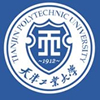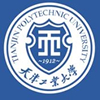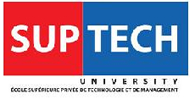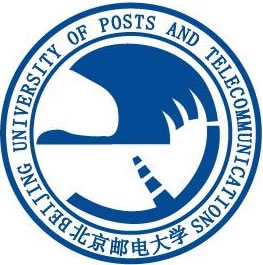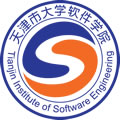Our mission
- Gender equality
- Education Quality for all
- Education Mobility for all
- Education technology « Edtech » for all
- Health technology « Healthtech » for all
Gender equality
GDA promotes gender equality and works to ensure equal educational opportunities for girls and boys.
GDA is mobilizing partners to put gender equality at the heart of education systems, so that all girls and boys have the chance to learn and thrive.
The education of young girls is an essential element of their access to economic autonomy and their emancipation.
132 million girls worldwide are out of school (2016). This includes 34.3 million girls of primary school age, 30 million of lower secondary school age and 67.4 million of upper secondary school age.
Quality of teaching for all
Accreditation of schools and programs plays a vital role in the quest for quality and equity in education. Here are some thoughts on how it can help reduce social inequalities:
Uniform quality standards:
Accreditation establishes uniform quality standards for schools and programs. This ensures that every student, regardless of their socio-economic situation, has access to quality education.
Transparency and accountability:
Accreditation processes involve external assessments and public reporting. This promotes transparency and accountability of schools towards students, parents and society.
Continuous improvement :
Accreditation encourages schools to engage in a process of continuous improvement. This can lead to more effective teaching practices and better consideration of the needs of students from disadvantaged backgrounds.
Equity in access to higher education:
Accreditation of higher education programs is essential to ensure that all students have access to quality educational opportunities. It also makes it possible to fight against unfair selection and to open the doors of higher education to a diverse public.
Reduction of resource disparities:
Accreditation processes also assess the resources available in schools. This can help identify disparities and allocate resources more equitably.
In short, school and program accreditation is a powerful tool for promoting quality and equity in education. However, it is essential to ensure that these processes do not become additional obstacles for disadvantaged students, but rather levers for their success.
“Edtech” educational technology for all
EdTech (for Educational Technologies) is a field that integrates new technologies into education. It encompasses various aspects such as the digitization of educational resources, the gamification of content and even the use of augmented reality headsets in the classroom. This trend is not temporary, and 92% of teachers believe that technology will have a major impact on the transmission of knowledge in the future.
Why is EdTech important?
For teachers, it offers a more effective means of communication and the possibility of reaching a wider audience.
For learners, it allows them to learn at their own pace and adapt the educational material to their preferences and modes of intelligence (visual, auditory, creative, experimental, etc.).
Advantages of EdTech:
Improved understanding and retention of information: Augmented reality makes it easier to understand abstract concepts, while gamification makes learning more engaging.
Improved learning experience: Varied formats such as podcasts, video tutorials and e-books break the monotony of lectures1.
Challenges faced by EdTech:
Inequalities of access: Some students have less access to digital tools.
Teacher training: It is essential to train teachers in the effective use of technology.
Equity: Ensure that all learners can benefit from the benefits of EdTech.
In short, EdTech has the potential to reduce inequalities by offering more flexible learning opportunities tailored to each individual1. To achieve this, it is crucial to put in place institutional policies and strategies favorable to digital equity in education.
Health Technology for All
Health technology plays a vital role in improving healthcare and quality of life.
Health technology, also known as healthtech, encompasses precision medicine, drugs, medical devices, assistive technologies, techniques and procedures developed to solve health problems and improve the quality of care for people. patients.
It can be used in all types of healthcare establishments and directly contributes to the quality of care.
Digitalization and sustainable innovation are at the heart of current health technology trends.
– Telehealth: Remote medical consultations via digital platforms.
– Robot-assisted surgery: Use of robots for precise surgical procedures.
– Health data: Data analysis for more precise diagnoses and personalized treatments.
– Equity in Health Technology:
Unfortunately, access to health technology is not equitable in all countries and for all populations.
A paradigm shift is needed, emphasizing equity, inclusion and community participation.
This involves integrating the wisdom of marginalized individuals, families and communities into the design and use of technology.
WHO Global Strategy on Digital Health:
Adopted in 2020, this strategy aims to implement digital tools to improve health outcomes4.
It encourages innovation and concrete action for better global health.
In short, health technology has the potential to transform healthcare, but it is essential to ensure that it benefits everyone, without discrimination.
Student mobility & internationalization of the labor market
in a globalized economy, a country’s competitiveness depends largely on the skills of its workforce. One of the goals of higher education is therefore to develop the skills of students, so that they can meet the growing demand for highly skilled workers.
Student mobility and its impact on the internationalization of the labor market are subjects of great importance.
Student mobility:
Student mobility refers to the movement of students abroad to pursue their studies. This may include academic exchanges, scholarship programs, international internships, etc.
The European Union (EU) actively supports student mobility through initiatives such as the Erasmus program and the Bologna process.
Student mobility trends:
The number of students enrolled in higher education institutions abroad has increased significantly in recent years.
The reasons for this mobility are varied: acquisition of multicultural skills, learning opportunities, etc.
Impact on the labor market:
Studying abroad can have a positive effect on the international mobility of graduates.
Skills acquired abroad, mastery of foreign languages and multicultural experience are assets in the global job market.
Determinants of student mobility:
Prior exposure to international experiences, parental education level, and other factors influence students’ decisions to study abroad.
In short, student mobility contributes to training a competent and multicultural workforce, which is essential in a globalized economy.
